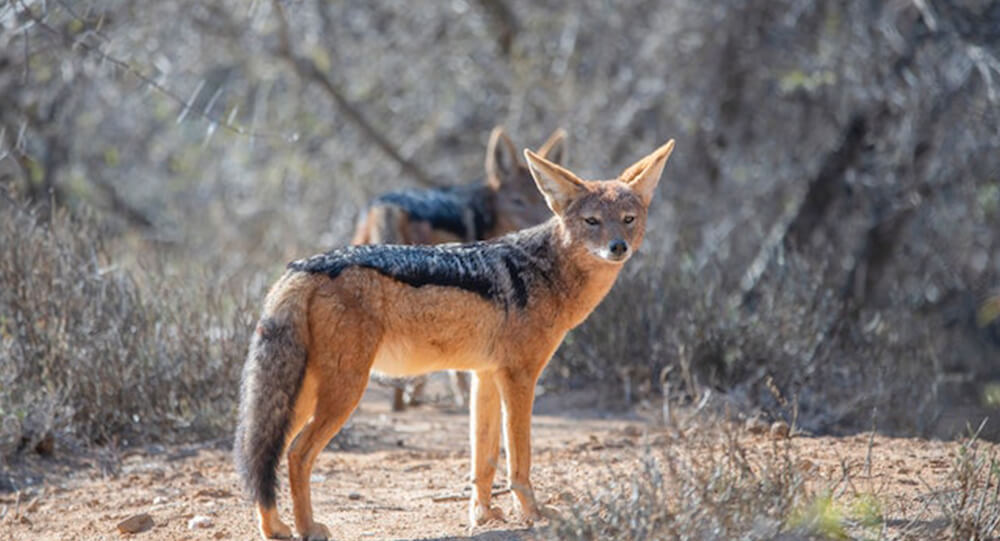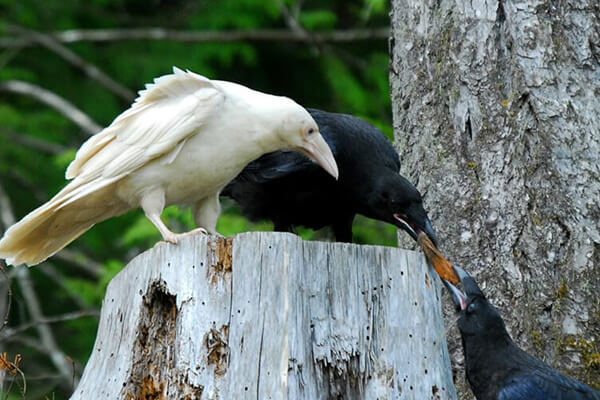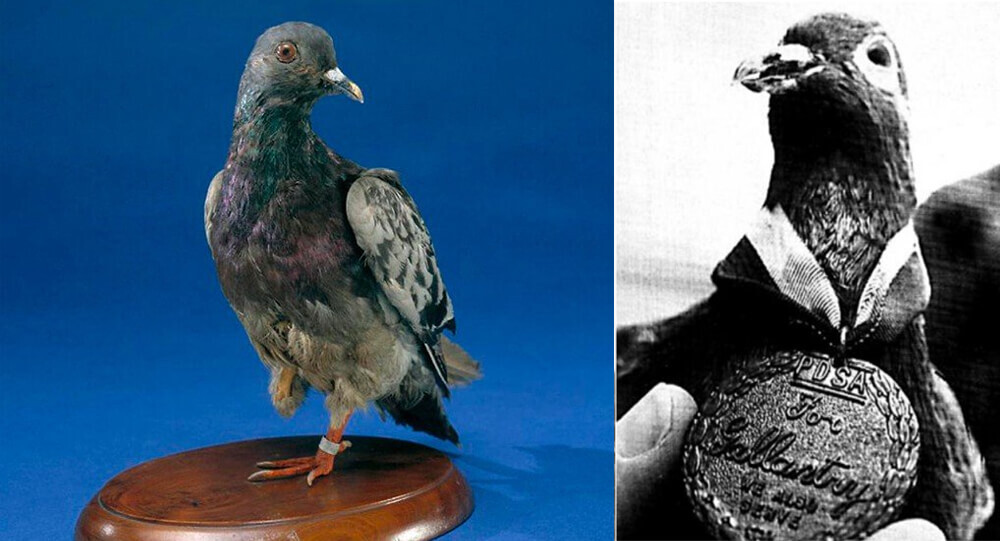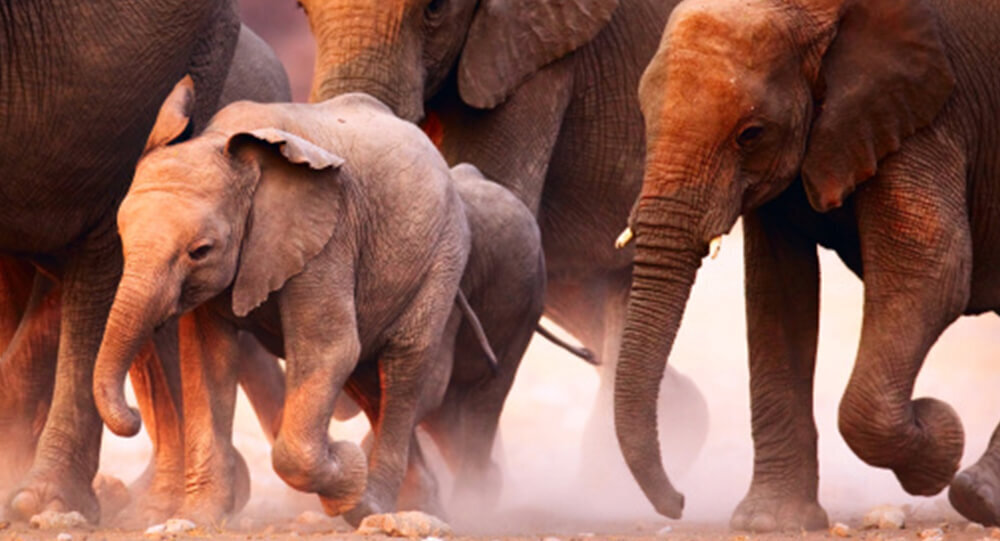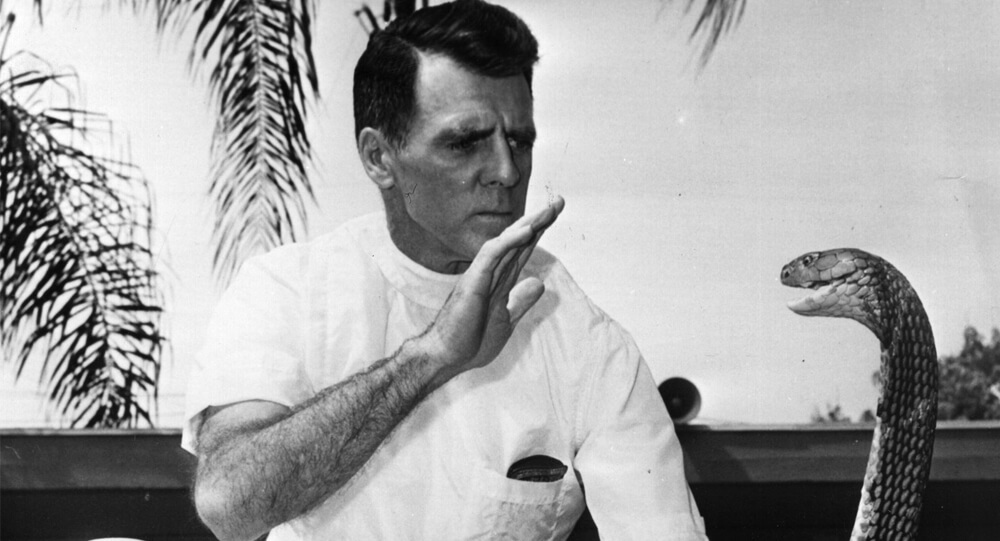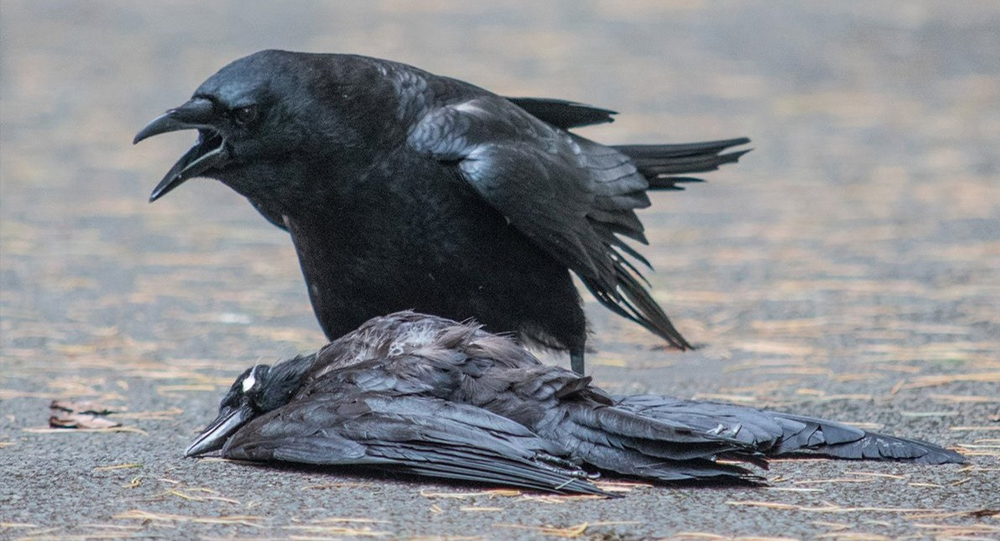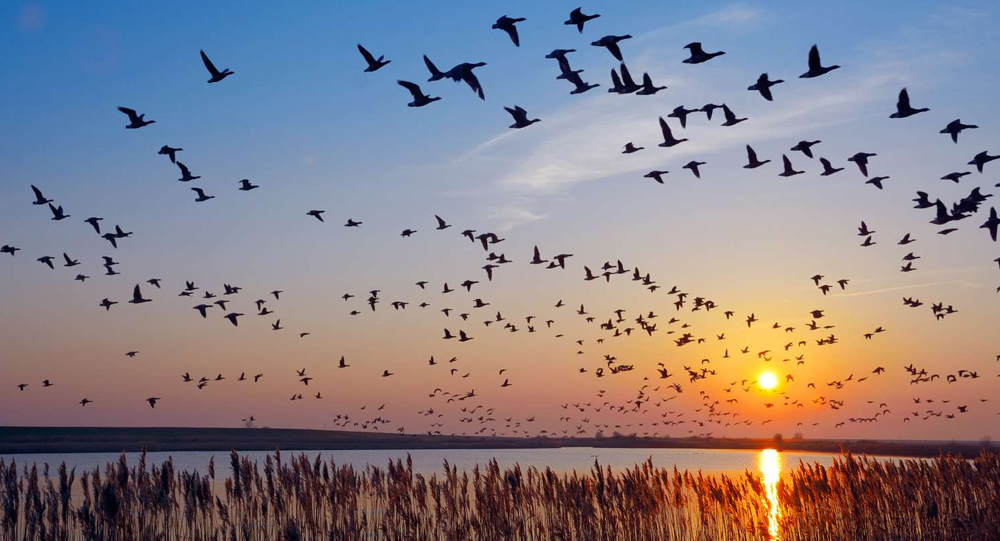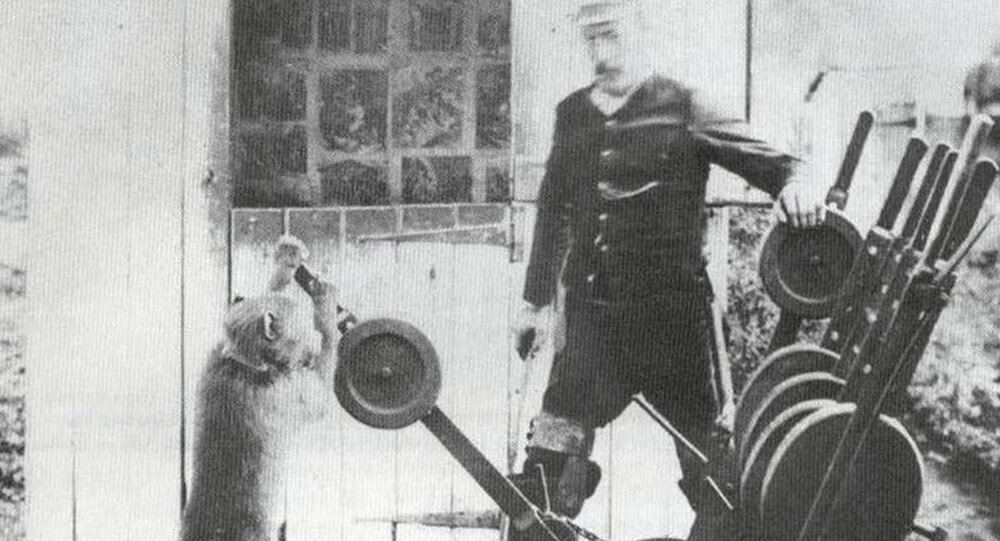
On the Port Elizabeth Mainline Railroad in the late 1800s, an unusual sight might be seen by anyone traveling through Cape Town, South Africa: a baboon manning the switchboard. This was not some Planet of the Apes situation; on the contrary. Jack the Baboon, a perceptive animal, spent nine years working on the railroad and providing Jumper, a paraplegic man, with company. His unusual tale demonstrates that animals are far more intelligent than we give them credit for and is full of charm and a certain type of cunning that will make you pine for the days when trains traveled the world.
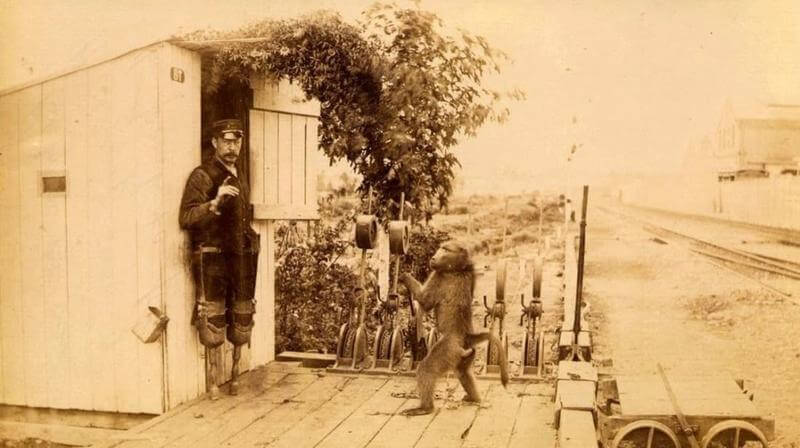
James Wide, a signalman, ran the Port Elizabeth Mainline Railroad before Jack came into the picture. Wide, who was known to his friends by the nickname “Jumper,” was known for frequently leaping from rail to rail and occasionally from car to car, but in 1877, he slipped and fell under a moving train. Jumper lived through the collision but was left without his legs. His days of jumping were over, and he was no longer the signalman he once was, so he made a set of wooden peg legs and tried his best to maneuver a trolly. The 1800s, however, were a much stranger era, and one day Jumper saw a man in the town with a baboon.
He persuaded the man to sell him the primate, Jack, and quickly taught him how to operate a wheelchair. Jumper had a brilliant idea after being pleasantly surprised by Jack’s knowledge. Jumper reasoned, “If he can do that, why couldn’t he operate a signal box?”
There was no monkey business on the railroad
In a cottage located half a mile from the railroad, Jumper and Jack the Baboon shared a home. The man and his primate companion walked up the hill every morning to the depot, where Jack quickly picked up how to operate the signals that instructed engineers which tracks to take. Every time an engineer needed to obtain more fuel, they had to alert the baboon because he also held the key to the coal sheds at the depot. Jack was paid $0.20 per day and half a bottle of beer per week for his diligent work. He was living the high life for a baboon.
Jack was so good that no one knew a baboon was operating a railway
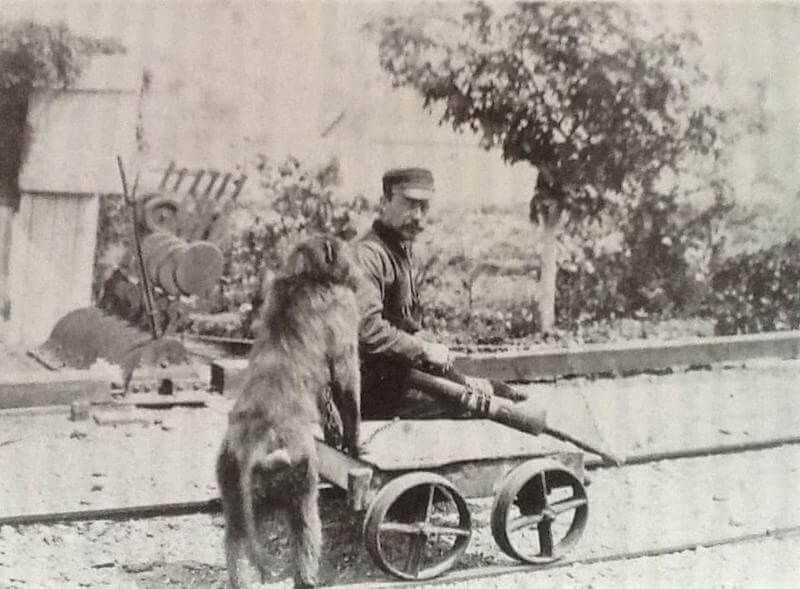
Not only did Jack the Baboon do a decent job, but he might have been the best worker at the depot. Obviously, the people riding the trains that sped along his railroad were unaware of this, and when they realized that a baboon was in charge of their lives, they naturally tended to panic. An investigation was started by a passenger who saw Jack at work and complained to the railroad; however, Jumper made no attempt to conceal the fact that he employed a baboon. He was pleased with Jack. Sadly, they were both fired right away. It appears that not everyone values effort.
The public is proven wrong
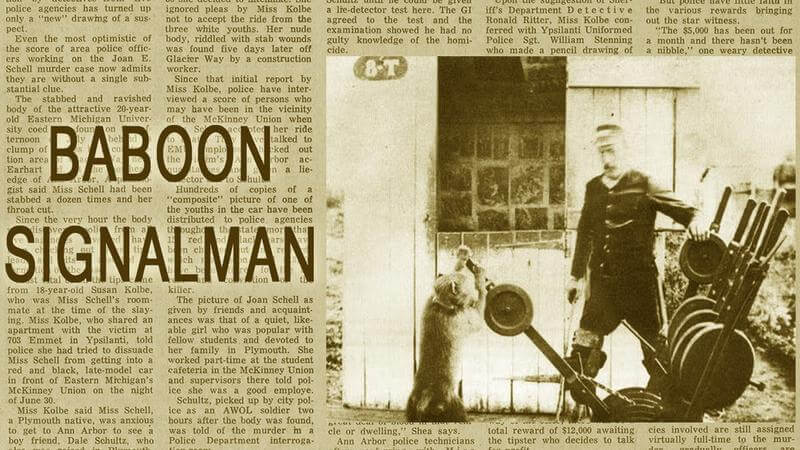
In 1880, there weren’t many opportunities for a baboon companion and a peg-legged railroad worker. The odd couple’s precarious situation was made worse by the fact that losing their jobs also meant losing their cottage. Jumper begged the railroad’s system manager to put Jack through a test to demonstrate his competency so the friends could keep their jobs as they faced terrible destitution. Jack achieved a perfect score. Everyone in the situation agreed that Jack was an excellent worker and a pleasure to work with.
Jack worked for nine years without incident
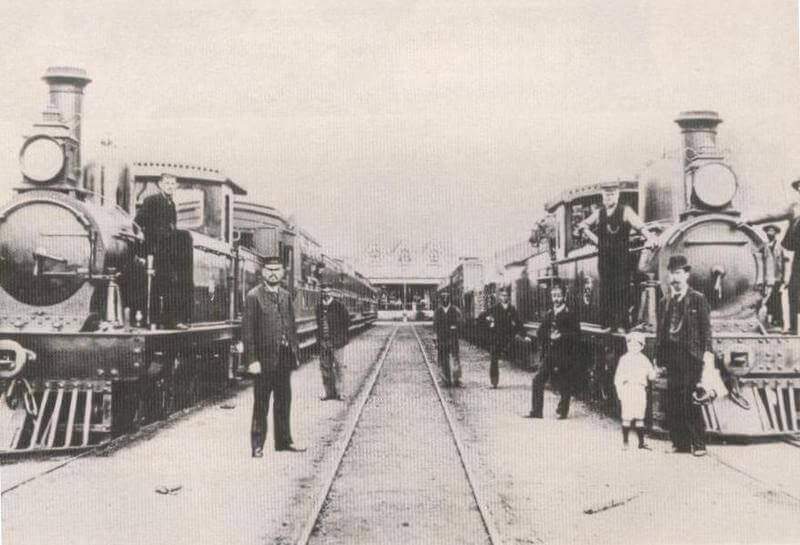
Whatever reservations the narrow-minded people who questioned Jack may have had, they were repeatedly disproven. Jack the Baboon worked for the railroad for nine years and never had an accident. He was a night watchman who ensured that trains arrived at the depot on time and deterred trespassers. Unfortunately, he succumbed to the 19th century and died of tuberculosis in 1890 after working for almost ten years.
Jack is such a beloved treasure of South Africa that his skull is still on display at the Albany Museum in Grahamstown, South Africa, serving as a reminder to everyone who visits that they have no excuse to slack off on the job. His legacy lived on among his fellow rail workers, who could only aspire to his level of perfectionism despite the fact that they towered over the little primate.

A man travels for hours daily through a drought to provide water for wild animals.
This man travels throughout Kenya bringing thirsty animals thousands of litres of water. Patrick Kilonzo Mwalua regularly travels to the Tsavo, where extreme drought is endangering the lives of elephants, buffalo, zebras, and antelope. He promises to keep giving out water every week until it starts to rain in the hopes that getting the word out will lead to a long-term fix.

A one-eyed Vancouver fish receives a fake eye so that other fish will not bully him
A fish whose eye was removed due to cataract was bullied by other fish at the Vancouver Aquarium. So the vets fitted the fish with a prosthetic eye to fool the other fishes.

Deer Walks Into Store To Check Their Goods, Comes Back Later With Her Kids
In 2017, a deer entered a Colorado store. An employee fed the deer a peanut bar in an attempt to get it to leave. The deer did leave, but later that day it returned with its entire family.

9 Reasons Crows Are Smarter Than You Think
Crows have the intelligence of a 7-year-old human, making them one of the smartest non-primate animals on the planet. They use tools, have a long-term memory that includes facial recognition, and comprehend analogy.

How Switzerland ended rabies epidemic by air-dropped vaccinated chicken heads
A rabies epidemic struck foxes in Switzerland in the 1960s. The government wanted to vaccinate foxes against rabies, but manual vaccination was difficult and expensive. Instead, they began dropping vaccinated chicken heads across the countryside for the foxes to consume, and the rabies vanished.

The story of a man who spent 72 hours with 72 venomous snakes to prove they only bite when provoked
In the 1980s, an Indian man spent 72 hours in a glass cabin with 72 snakes, some of which were extremely venomous. His aim was to prove that snakes only attack when provoked. Remarkably, he was not bitten once in those 72 hours and even set a Guinness World Record in the process.

Bear, Tiger, And Lion Became Friends For Life
In 2001, a Bear, Tiger, And Lion cub where found abandoned in a drug dealer's basement. They were soon adopted by a sanctuary and lived together ever since.

10 Rarest and Albino animals you haven’t seen
For centuries, people have been fascinated and enchanted by the ghostly appearances of abnormally white animals. People have loved albinos and other unusually white animals so much that they may be helping to increase their numbers, despite the difficulties these animals face in the wild. While these unusual animals did not win the genetic lottery, they have persevered in the face of adversity.

13-year-old dog missing for two months found alive in a cave.
On Aug 6, 2022, A group of Missouri cave explorers accidentally found and helped rescue a senior dog that had been missing for two months. It is unclear how long the dog was in the cave or how it managed to survive.

Chen Ami, The Bravery pigeon that saved 194 Soldier
During World War 1, a carrier Pigeon name Cher Ami was shot, blinded and had her leg blown off. She is still able to deliver the message and saved lives 194 soldiers.

Earthquakes: Can Animals Really Predict Them?
In 1975, when officials in the Chinese city of Haicheng were alarmed by odd and anxious behaviors of dogs and other animals. These observations led them to order 90,000 residents to evacuate the city. Only a few hours later a 7.3 magnitude earthquake destroyed nearly 90% of the city’s buildings.

The story of Bill Haast, who lived to be 100 despite his extensive snake venom injections
Bill Haast immunized himself by injecting snake venom into his blood for several years. He holds the Guinness World Record for surviving the most lethal snake bites, having been bitten over 172 times. Bill became known as "Snake Man" around the world and lived for over 100 years.

Why the Brooklyn Bridge Was Once Crossed by 17 Camels and 21 Elephants
On May 30, 1883, a rumor that the Brooklyn Bridge was going to collapse caused a stampede, which killed at least at twleve people. To prove the bridge was safe, P.T. Barnum led a parade of 21 elephants over it.

The Incredible Story of Sergeant Stubby, the Dog Who Became a War Hero
Sergeant Stubby was not just an ordinary dog—he was an extraordinary war hero who served alongside American troops during World War I. From catching a German soldier by his pants to alerting soldiers of mustard gas attacks and locating wounded comrades, Stubby’s bravery saved countless lives in the trenches. This article chronicles the inspiring journey of the stray dog who became the most decorated animal of the Great War and remains a beloved symbol of courage and loyalty.

The viral stray dog walked up to a pharmacy in Istanbul and showed an injured paw
Back in 2019, a stray dog walked up to a pharmacy in Istanbul and showed an injured paw to the pharmacist who then treated the wound and gave the dog food and water. The incident was caught on video, which went viral instantly.

Megamouth Shark And Her Babies Found Dead In The Philippines
Filipino zoologists have recorded a pregnant megamouth shark for the first time ever since the rare aquatic specie was discovered in 1974.

Why Crows Hold Funerals for Their Dead
Crows are far more than noisy backyard birds; they engage in peculiar, ritualistic behaviors when one of their own dies. Known as “crow funerals,” these gatherings involve groups of crows circling, calling, and sometimes even interacting physically with the deceased in ways that stump scientists and captivate bird watchers. What drives this strange behavior? New research reveals it’s a complex mix of learning, social bonding, and survival instinct wrapped in an enigmatic ritual.

The unique friendship of a bear and a dog
A female grey wolf and a male brown bear's remarkable "friendship" was captured by Finnish photographer Lassi Rautiainen over the course of ten days in 2013. Together, they traveled everywhere while hunting and splitting their catch.

The Evolution of Flight: From Dinosaurs to Birds – A Journey Through Time and Science
Flight is one of nature’s most remarkable adaptations, but its origins trace back millions of years before modern birds took to the skies. Emerging from theropod dinosaurs during the Jurassic period, birds evolved feathers, wings, and lightweight bodies that enabled powered flight. This detailed narrative explores the fascinating evolutionary path from ground-dwelling dinosaurs to the aerial masters of today, blending science, intriguing fossil finds, and surprising trivia about our feathered ancestors.

Are Octopus Intelligent? A Look Inside an Octopus's Brain
Octopuses are extremely intelligent. It is the only invertebrate capable of emotion, empathy, cognitive function, self-awareness, personality, and even interpersonal relationships. Some believe that if humans did not exist, octopi would eventually take our place as the dominant life form on Earth.

How European Rabbits Took over Australia
In 1859, wealthy settler Thomas Austin released 13 wild rabbits on his Australian estate. By 1920, their population grew to 10 billion.

How Migratory Birds Navigate Thousands of Miles Without Getting Lost
Migratory birds undertake epic journeys spanning thousands of miles with astonishing precision, never losing their way. Their secret lies in a remarkable blend of innate senses, learned experience, and sophisticated navigation tools—ranging from the Earth's magnetic field to celestial clues and mental maps. Explore how these feathered travelers accomplish one of nature's most astounding feats through science, intuition, and adaptation.

9-Year-Old Hero from Yemen Rescues Fox from a 3-4 Floor Deep Well—No Ropes, Just Bravery
In an inspiring act of courage, a 9-year-old boy from Yemen rescued a trapped fox from a deep well—three to four floors underground—without any climbing equipment. Discover the full story of how quick thinking, determination, and sheer bravery saved an innocent life against all odds.

Titanoboa cerrejonensis, fossils of the world’s largest species of snake
In 2009 in a coal mine of Columbia, scientists discovered fossils of the world’s largest species of snake. The species is called “Titanoboa cerrejonensis,“and it is from around 60 million years ago. It would have had measured about 48 feet long and weighed about 2,500 pounds

Blind dog guides by goose, Story of Boxer and Buttons’ friendship
When Baks the blind dog was left blinded after an accident, his friend Buttons became his seeing-eye-goose by hanging on to him with her neck and honking to direct him.





